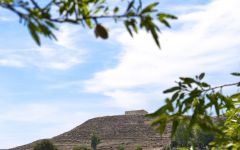Baron de Magana 2010
-
Robert
Parker



Product Details
Your Rating
Somm Note
Winemaker Notes
A sensational effort, it boasts a dense ruby/purple color as well as abundant notes of blackberries, creme de cassis, camphor and flowers, a medium to full-bodied mouthfeel, tremendous lushness and purity, and a beautifully textured, round, generous finish. This sexy, supple wine should drink well for 3-5+ years.
Professional Ratings
-
Robert Parker's Wine Advocate
Even better than the Dignus is the 2010 Baron de Magaña, a blend of 35% Merlot, 35% Cabernet Sauvignon, 20% Tempranillo and 10% Syrah from a vineyard planted in 1970 and aged 14 months in 70% new and 30% old French oak. A sensational effort, it boasts a dense ruby/purple color as well as abundant notes of blackberries, crème de cassis, camphor and flowers, a medium to full-bodied mouthfeel, tremendous lushness and purity, and a beautifully textured, round, generous finish. This sexy, supple wine should drink well for 3-5+ years.
Other Vintages
2011-
Robert
Parker -
Wilfred
Wong
-
Wine
Spectator
-
Robert
Parker

With hundreds of red grape varieties to choose from, winemakers have the freedom to create a virtually endless assortment of blended red wines. In many European regions, strict laws are in place determining the set of varieties that may be used, but in the New World, experimentation is permitted and encouraged resulting in a wide variety of red wine styles. Blending can be utilized to enhance balance or create complexity, lending different layers of flavors and aromas. For example, a red wine blend variety that creates a fruity and full-bodied wine would do well combined with one that is naturally high in acidity and tannins. Sometimes small amounts of a particular variety are added to boost color or aromatics. Blending can take place before or after fermentation, with the latter, more popular option giving more control to the winemaker over the final qualities of the wine.
How to Serve Red Wine
A common piece of advice is to serve red wine at “room temperature,” but this suggestion is imprecise. After all, room temperature in January is likely to be quite different than in August, even considering the possible effect of central heating and air conditioning systems. The proper temperature to aim for is 55° F to 60° F for lighter-bodied reds and 60° F to 65° F for fuller-bodied wines.
How Long Does Red Wine Last?
Once opened and re-corked, a bottle stored in a cool, dark environment (like your fridge) will stay fresh and nicely drinkable for a day or two. There are products available that can extend that period by a couple of days. As for unopened bottles, optimal storage means keeping them on their sides in a moderately humid environment at about 57° F. Red wines stored in this manner will stay good – and possibly improve – for anywhere from one year to multiple decades. Assessing how long to hold on to a bottle is a complicated science. If you are planning long-term storage of your reds, seek the advice of a wine professional.

Just north of Spain’s famous Rioja region, Navarra excels in the production of full and fruit-dominant reds and good quality, dry rosés. Garnacha holds most of the land under vine, with Tempranillo coming in second place.








